DUCATI’S DESERTX RALLY: DESIGN INSIGHTS
Project Manager for Ducati’s DesertX models, Filippo Marri, offers a candid insight into how the up-specced DesertX Rally model was conceived and developed.
Imagine the very first job you landed after finishing university was as a project manager for some of Ducati’s most lucrative new models – such as the Scrambler range, the Multistrada V2 and all-new DesertX adventure tourer. Well, that’s exactly what happened to Filippo Marri.
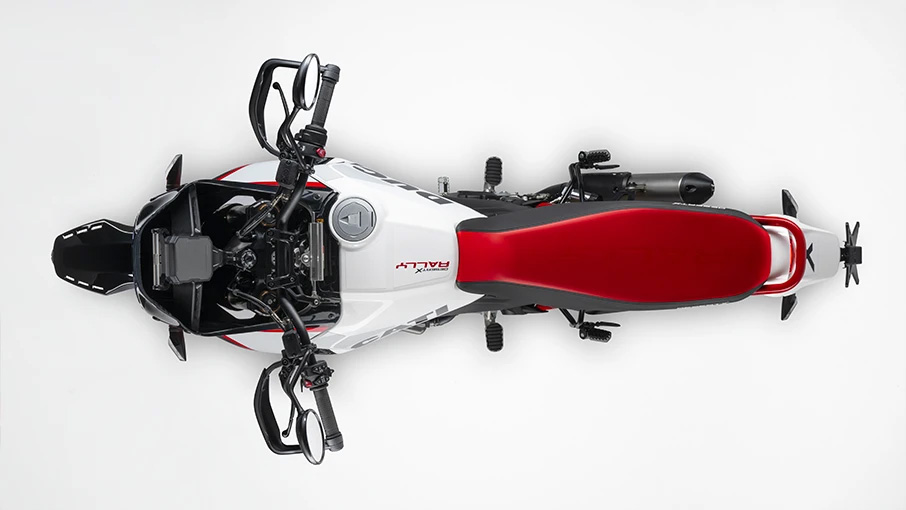
At the recent international media launch for Ducati’s DesertX Rally in Morocco, Transmoto’s Andy Wigan sat down with the likeable 32-year-old Filippo Marri, the Project Manager for the all-new DesertX Rally model, for a fascinating insight into the design philosophy behind this pivotal machine for Ducati and the R&D process that led to the finished product.
TM: Tell us about your background with Ducati and the DesertX, Filippo.
FM: I’ve been with Ducati for about five years now, based in the Bologna factory in Italy. It’s actually my first job after university. I started in the same position I am in now – as a project manager. My first job was to update the first family of Scrambler models. Then I switched to the Multistrada V2 project. And after that, we kicked off this DesertX project. So, I’ve been involved with the DesertX as project manager from the beginning – from the concept right through the entire development process.
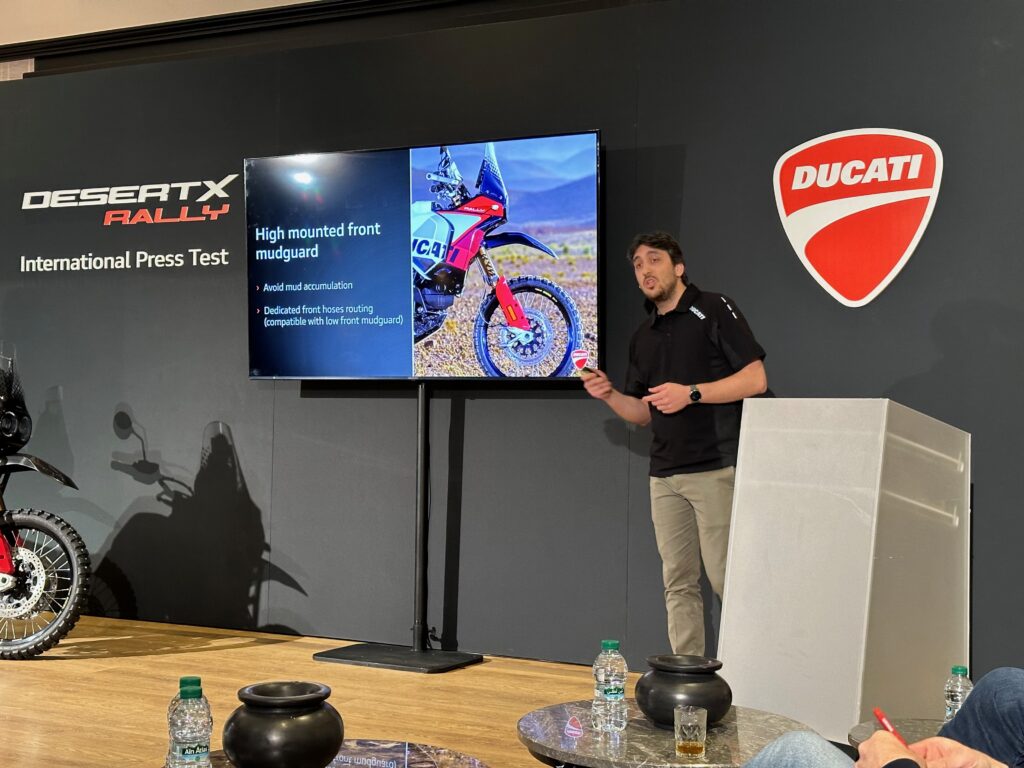
One of your colleagues shared a funny story with me here at the launch, saying that after the DesertX prototype was displayed at EICMA show back in 2019, Ducati had no choice but the build it because the response to it was so positive. That made me wonder whether a mid-capacity adventure tourer was always part of Ducati’s grand plan, or whether that 2019 experience was what focused Ducati’s attention on opportunities in the off-road sector.
Well, you’re right in the sense that we used that 2019 EICMA show to get a feel for the market’s reaction to the DesertX concept. But I would also say that this model was not something that came totally out of the blue back then. At that time, we had already been working for years on the Multistrada Enduro projects, the 1200 and 1260. We were also working on the Desert Sled – which is positioned more as a lifestyle model, but also taught us a lot about how to develop an off-road bike. So, Ducati was heading in that direction and the DesertX concept bike came at the right time to confirm that direction, and at a time where we had developed the competence to build a properly off-road-capable machine.
Once the DesertX was in its development phase, was an up-specced Rally version of it always part of the strategy? Or did that come later, once the DesertX had created such a stir with consumers in the adventure bike market segment?
The idea of the Rally model came later; after we realised how good the standard machine proved to be in off-road conditions. Probably, we got a little overexcited about what we could achieve, so we decided to push the bar a little bit higher [laughs].
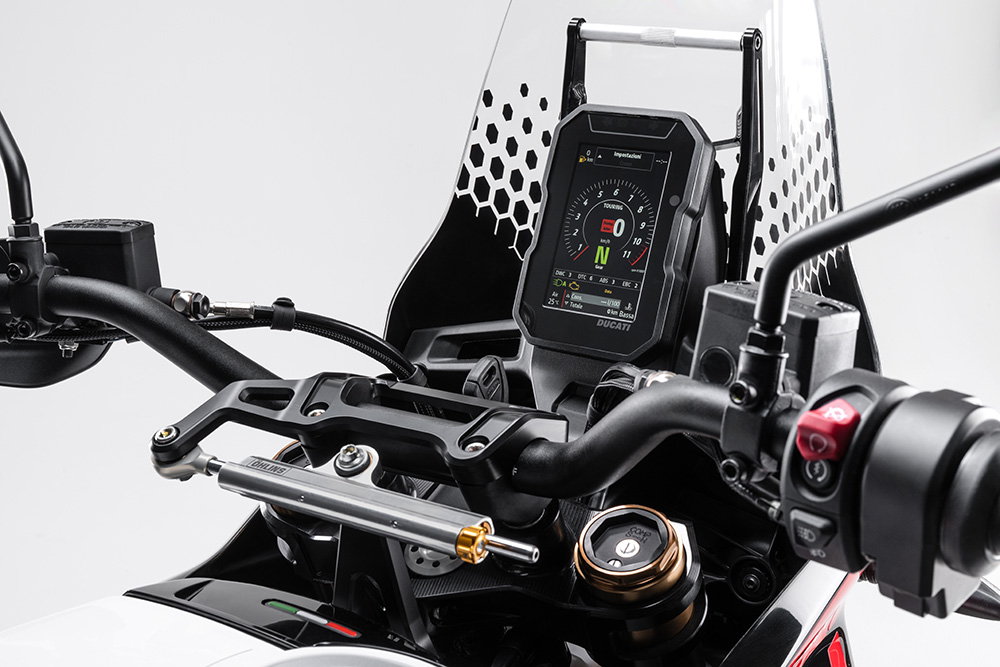
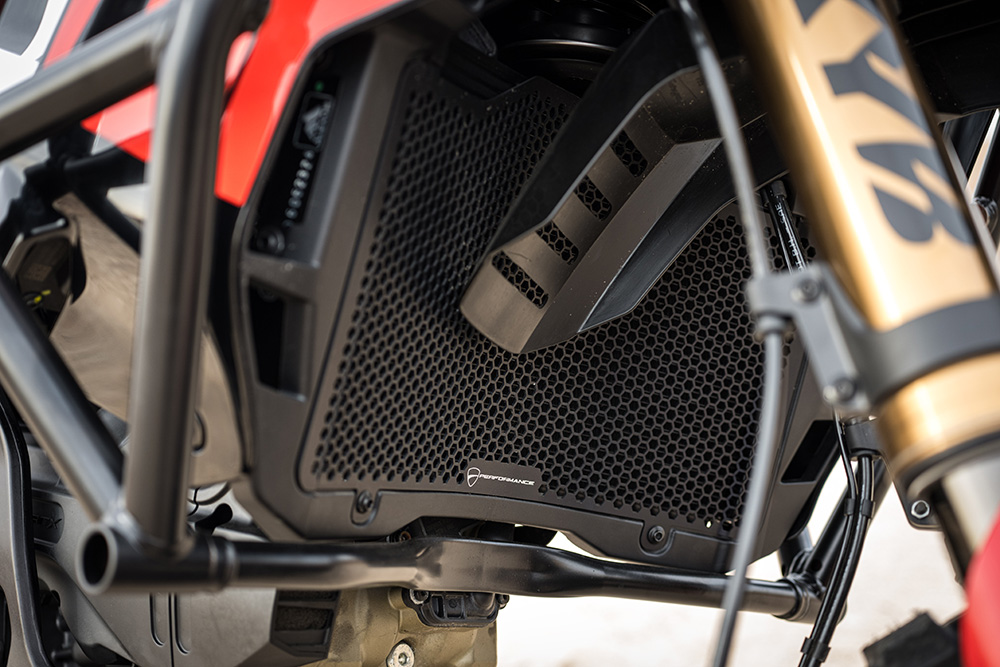
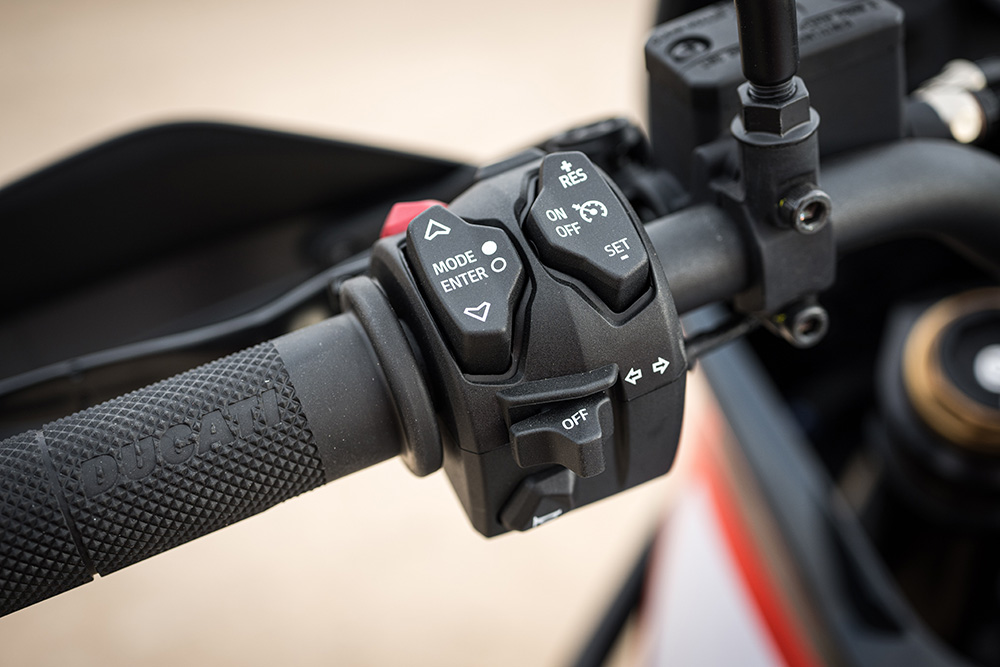
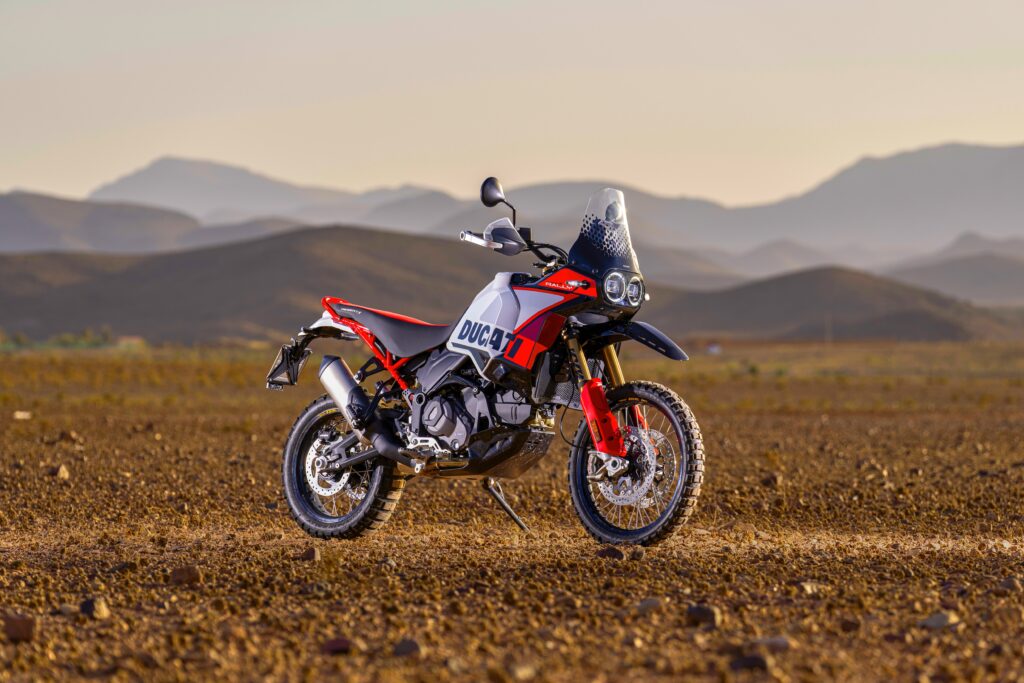
At the tech presentation here at the launch, you conceded that there was a risk the Rally model could be perceived as simply a better version of the DesertX. Explain what you meant by that.
The DesertX was always designed to be a very balanced bike – in that it would give you very good performance and fun on the road and off-road, and whether you were riding alone or with luggage and/or a passenger. In other words, to offer the widest possible balance in those different configurations. The Rally, however, was always a much more targeted model. We decided to push that balance I just spoke about off-balance; to extend its off-road performance and really raise the bar for more serious and experienced adventure riders who spend more time off-road, but do that with the smallest possible compromise in the bike’s on-road performance. And from the positive feedback we’ve received here at the media launch, I’m glad to say that I think we genuinely achieved that design objective.
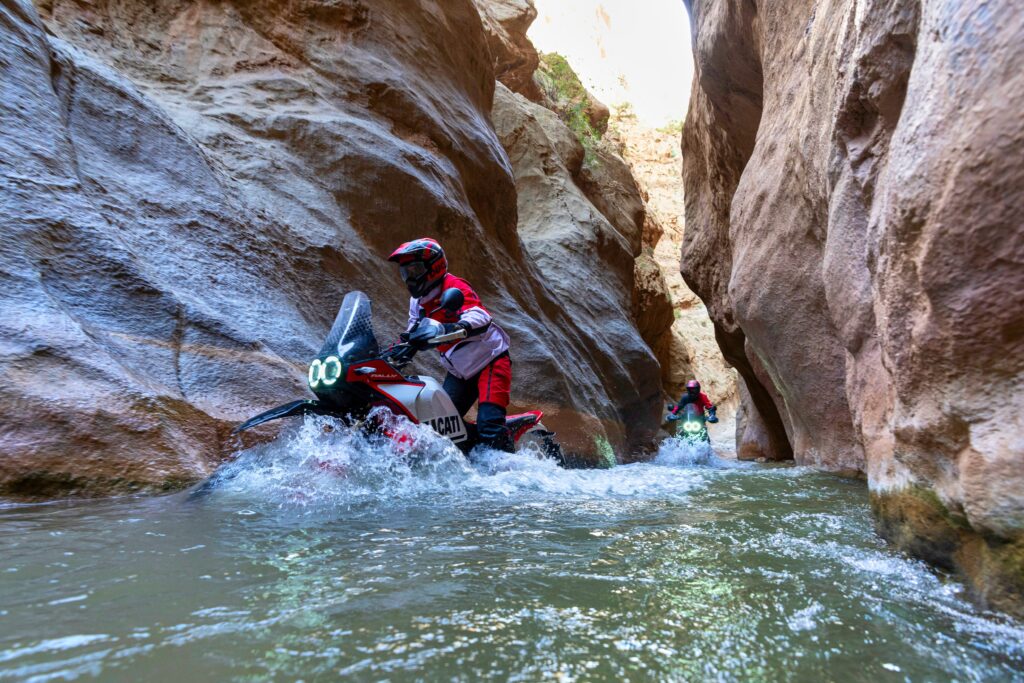
How did you manage to maintain that road-going performance because, on paper, the Rally is clearly designed with off-road terrain and bigger obstacles in mind? The reason I ask is that, if there’s one thing I heard from other journos at the launch, it was how surprisingly good they felt the Rally remains on the blacktop relative to the standard DesertX.
Yes. And remember that the roads here in Morocco are not great and that the bikes were fitted with the more off-road oriented Pirelli Scorpion Rally tyres. But in broad terms, I think we maintained the Rally’s road performance in two main ways: via the lighter wheels (they’re half a kilo lighter, despite moving from tubeless to tubed tyres) and via all the work we did with the Kayaba technicians to ensure we kept the balance right with the suspension set-up. Perhaps that over-simplifies it, because it’s a combination and many small details in components and set-up that translate into what you describe is surprisingly good performance on the road.
“The Kayaba guys were satisfied with the settings we ended up going with, and happy that a brand like Ducati chose them for a partnership with the DesertX Rally model.”
Speaking of Kayaba, it took a while for you to convince them to get involved with the project because they said their closed-cartridge fork had never been used on a ‘road bike’, right?
That’s true. It took some time to convince them because they had some initial doubts about road-going performance and reliability. But we quickly built confidence because Kayaba is a partner we’ve now been working together with for years – first on the standard DesertX and then with this DesertX Rally model.
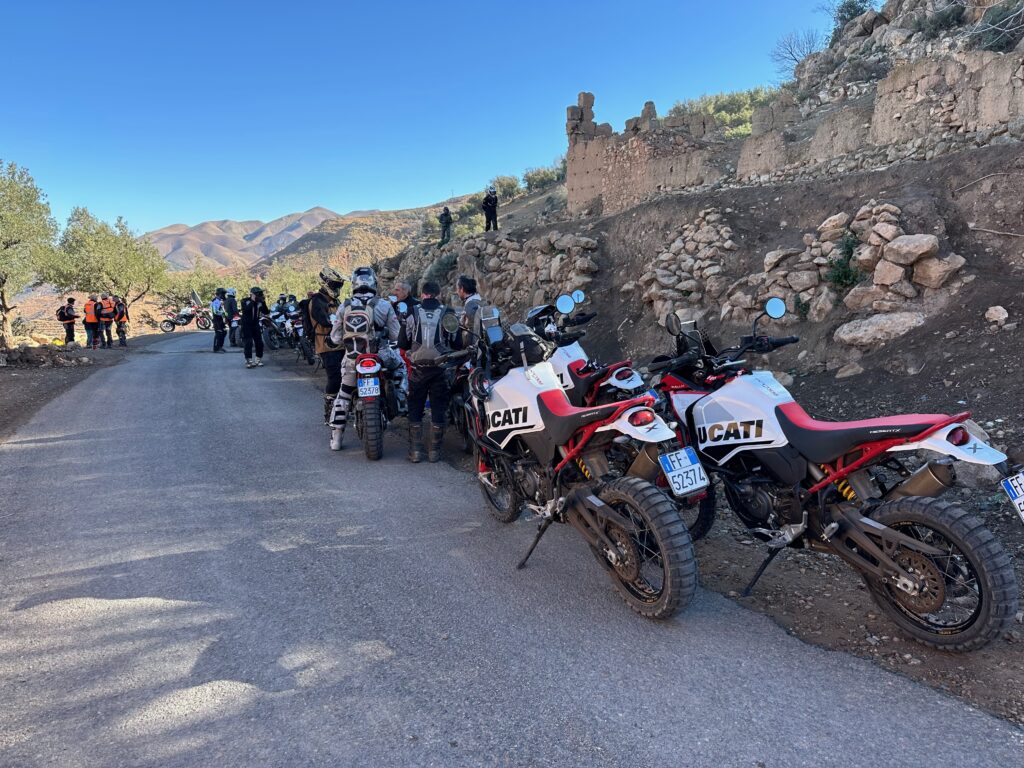
Let’s talk chassis for a moment. What people often overlook is that, by adding 20mm of suspension travel at both ends of the bike, you also lengthen the wheelbase and alter the geometry, albeit slightly. Was that the reason behind fitting those trick billet triple clamps (which come with a very different offset) to the Rally?
With the Kayaba 48mm fork being longer and larger diameter, we needed to make sure they maintained the proper clearances and functionality. The move from 20mm to 30mm offset for the front axle bracket was dictated by KYB because of the need to access the rebound adjusters in this closed-cartridge fork. So, we needed to update the offset at the upper end of the fork accordingly. That’s why, compared with the standard DesertX’s 34mm offset, the Rally model’s triple clamp offset is reduced to 25mm. Settling on that 25mm offset measurement was also the result of a lot of testing. So, when you combine those two changes in offset, the difference between the two models is just 1mm. That means the all the geometry numbers – including rake, trail, etcetera – remain the same on both the standard and Rally models.
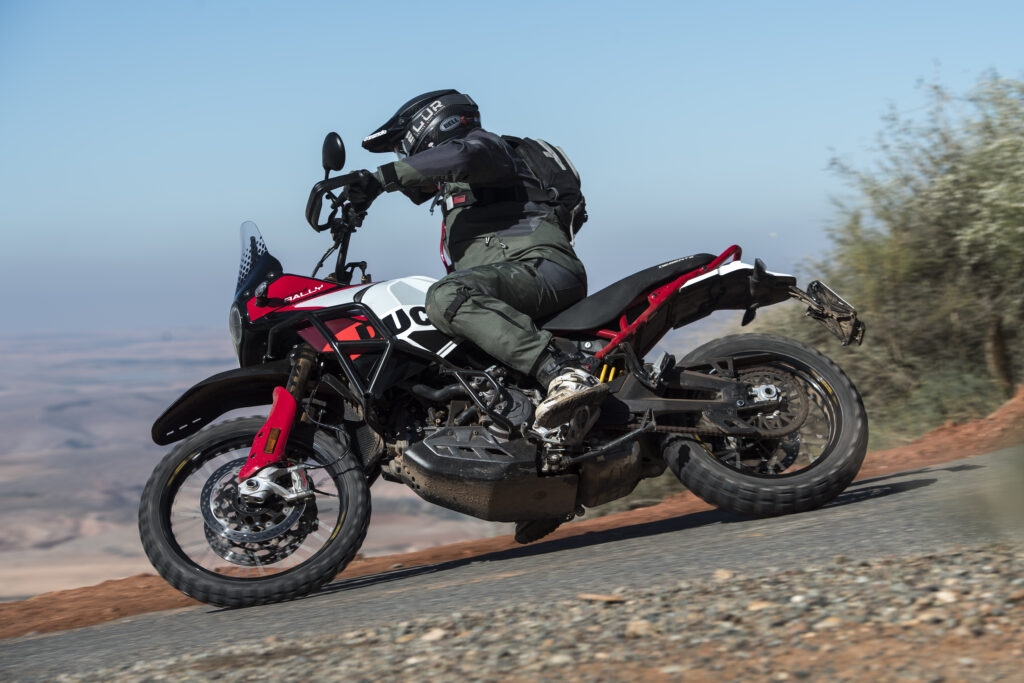
There was also a small change to the shock absorber’s mount to maintain that geometry parity too, right?
Yes. We changed the rear shock’s attachment point just to get the correct stroke and wheel travel and the correct lever ratio of the shock itself.
Having got Kayaba on board and proven that their closed-cartridge fork can work in adventure bikes, do you think their eyes may have been opened to a new, road-oriented market?
I don’t know. The Kayaba guys didn’t share any insights on that. But I do know that they were satisfied with the settings we ended up going with, and happy that a brand like Ducati chose them for a partnership with the DesertX Rally model.
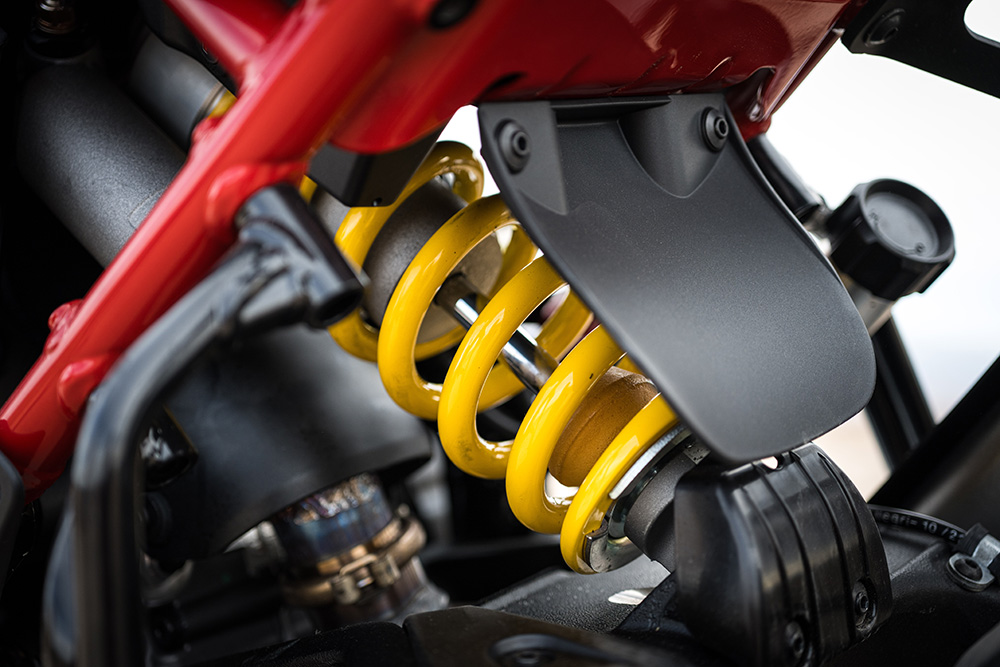
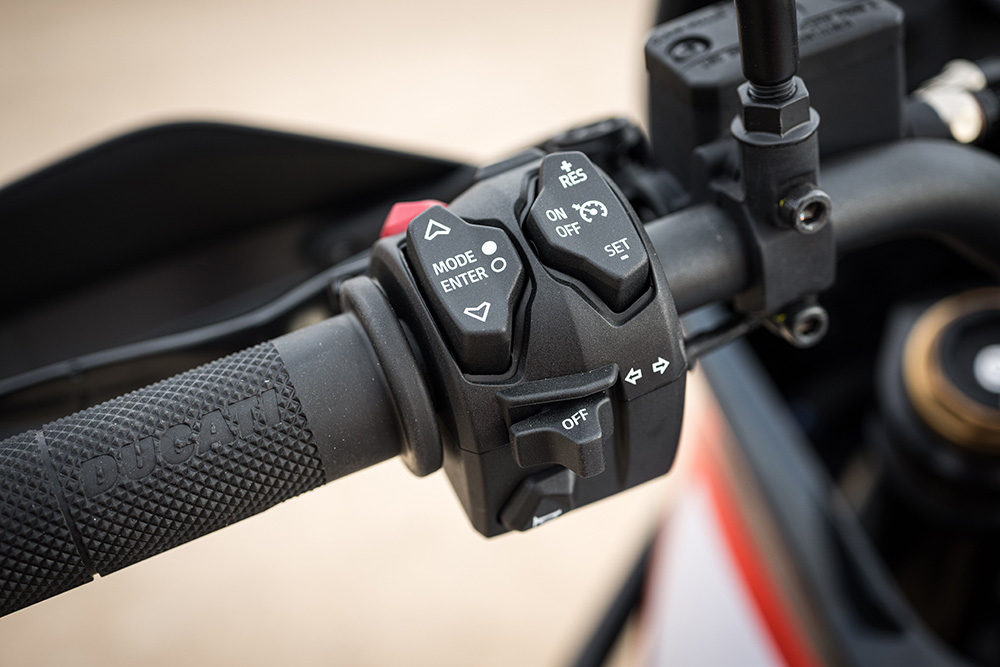
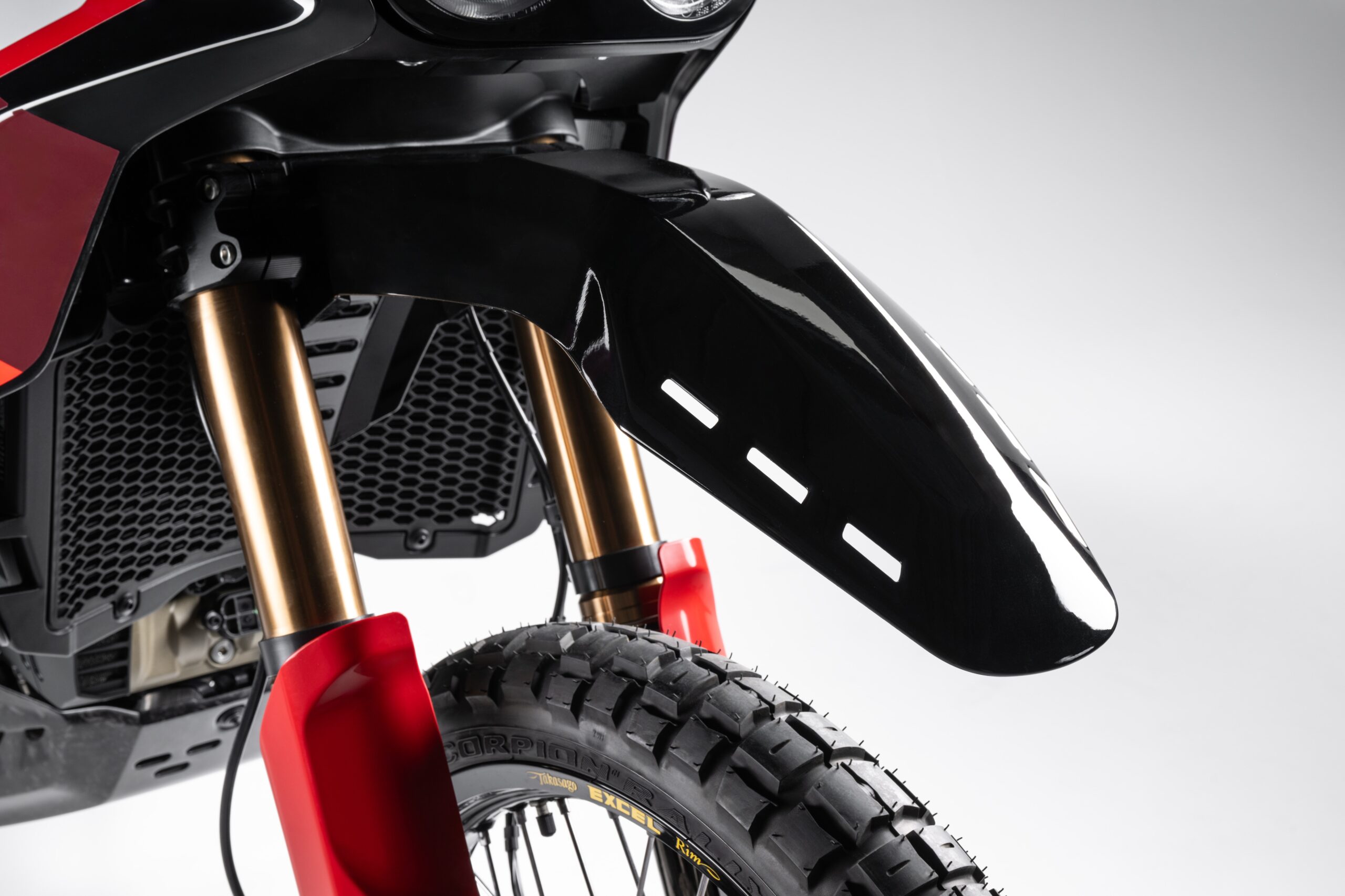
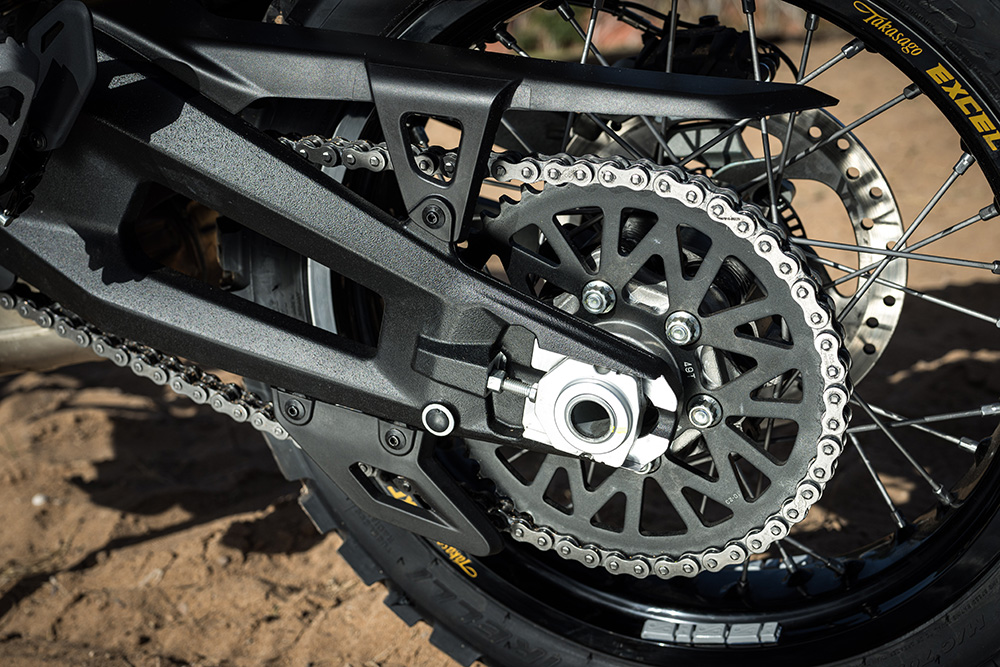
In some ways, what’s most interesting about the DesertX Rally is the mods you didn’t do on it. And by that, I mean its entire engine, exhaust and mapping is identical to the standard DesertX. Does that leave you open to criticism that, for an extra $12,000 over the standard model, the Rally should feature some engine mods or up-specced components?
I don’t think so because all the feedback we’ve had about the standard engine package – including all the riding modes – has been super-positive. And when you consider that the peak of 110hp is reduced to 75hp in the Enduro mode, then it’s apparent that consumers are not looking for more power or throttle response in off-road terrain – which is what the Rally model is aimed at. Also, this engine is very reliable and comes at the end of more than 15 years of development as the Testastretta Evoluzione engine was born with the 1098. That means we did not have the motive to work on engine updates, and we primarily focused on the chassis.
Suspension aside, there are a few other special components that stand out. For instance, the forged carbon bashplate…
This protective part is very strong and very light. Much of its strength is created by the forging process, plus it’s about one-quarter the price it would have been if it was laid-up carbon. To create it, we use a steel mould – like you’d use for an injection-moulded part – and fill it with short-fibre carbon that’s already impregnated with resin. The technical advantage of this process is that you can much more easily manipulate the thicknesses in various areas in fine detail.
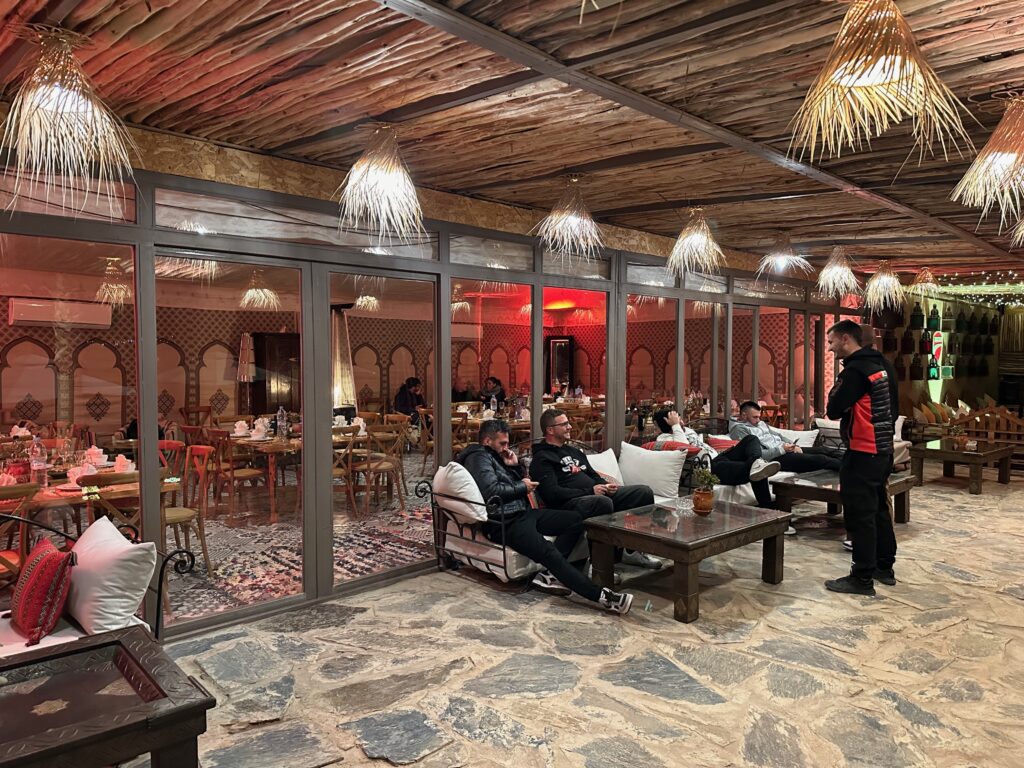
And why fit Pirelli’s STR tyres, which seem much more road-oriented than the otherwise off-road focus of the bike’s component spec?
Well, we had internal conversations about the best tyres to fit on the production bike, but we kept coming back to the fact that the STR is a very convincing all-round tyre. It gives you, say, 80 percent of the off-road performance as their Rally tyre, while giving you twice the confidence on the road as the Rally tyre. So, it’s a much better balance for everyday riding. The Rally tyre – while being very nice to ride in loose terrain – is much more specialised and will be preferred only by those who race or do 90 percent of their riding off-road.
“We maintained the Rally model’s road performance in two main ways: via the lighter wheels and via all the work we did with the Kayaba technicians to ensure we kept the balance right with the suspension set-up.”
With so much focus on the Rally model’s impressive performance, it seems like the service interval data sometimes gets overlooked.
Agreed, because those intervals are impressive and should be a key consideration for consumers. As with the standard DesertX, the Rally model’s recommended service intervals are 15,000km for engine oil changes and 30,000km for valve clearance checks. There is a difference between the two models with service intervals for the fork’s oil and seals – it changes from 45,000km for the standard model to 15,000km for the Rally model. This change was something we agreed on with the KYB guys because the fork uses some specific seals that are based on motocross technology, but we certainly pushed KYB to ensure the seals’ quality was suited to road-reliability standards. The drawback was that we had to reduce the service intervals accordingly. In our view, the riders who will be attracted to this model and the suspension capabilities it gives them is such a committed person who won’t mind that reduction in the service interval for suspension, and probably would have done it anyway.
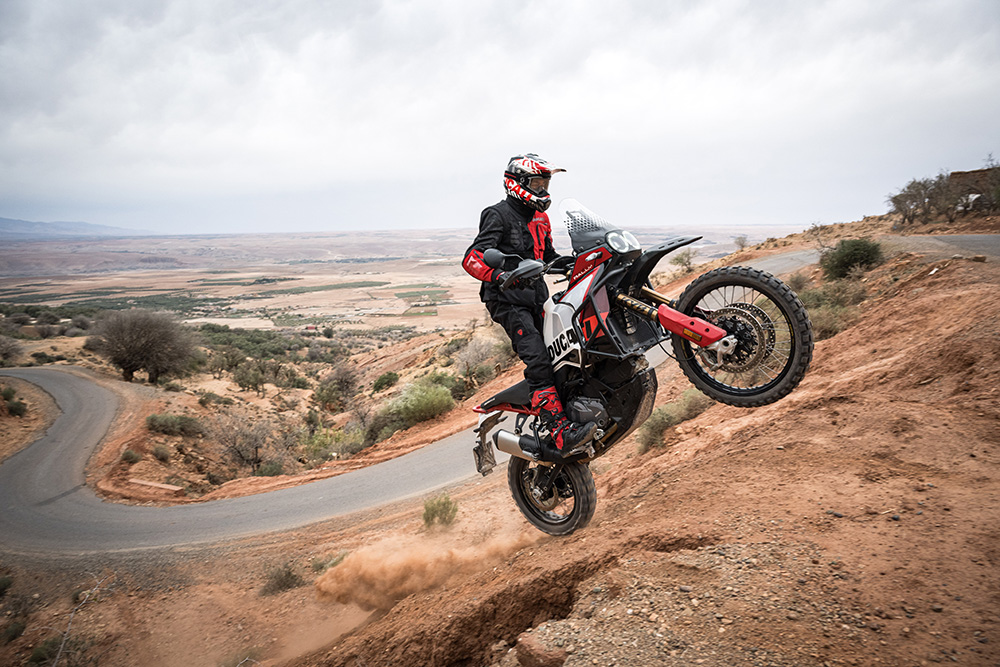
For off-road guys who are used to doing all their own bike maintenance, it’s a bit of running joke that Ducati’s owner manuals insist bikes are handed to an authorised Ducati dealer for virtually everything – from chain tension adjustment to oil changes. Which implies there needs to be a cultural shift as Ducati begins to release what it says will be a whole “family of off-road models” in the coming years.
That’s true. With the DesertX specifically, we had not had this discussion. But there has been a lot of discussion about this subject for the off-road world; to prepare for when our motocross bike and any other off-road models go into production.
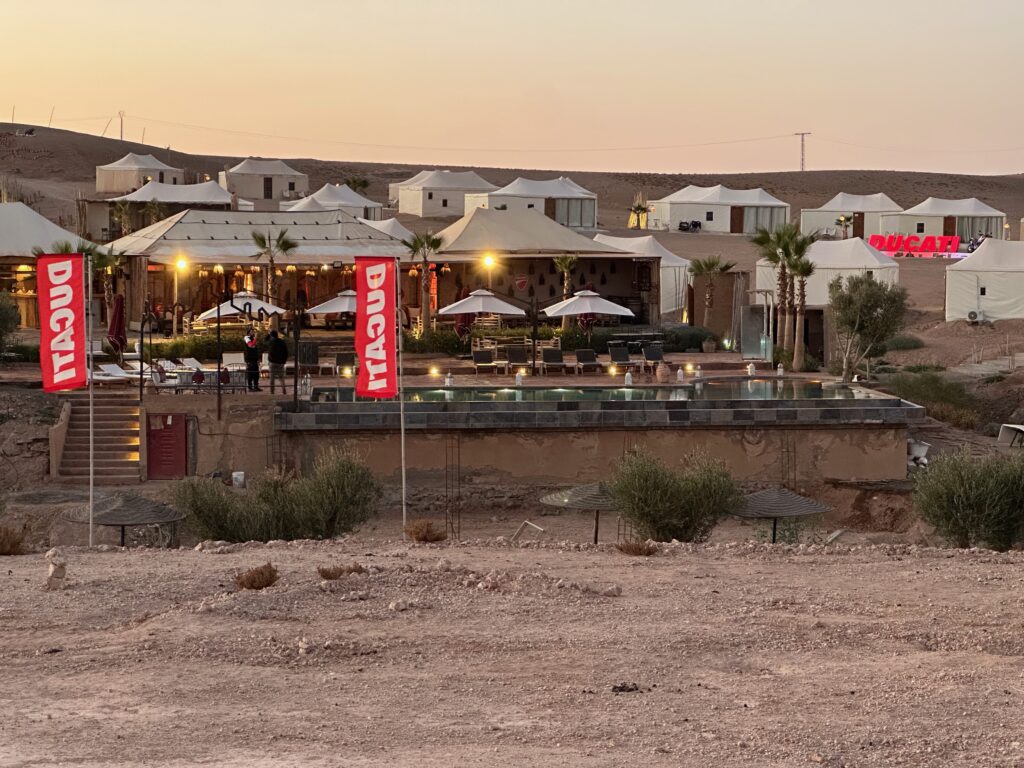
How has this launch been for you personally, Filippo, now that you’ve come full circle from the conception and R&D process with the DesertX Rally to having the world’s motorcycle media give you independent feedback about it?
It’s been very gratifying for me personally, and I’m sure it’s been the same for the large team at Ducati who’ve been involved with the project. I don’t want to sound too self-assured, but after all these years of work on the project, we were confident about this bike. We were already very proud of our achievements and confident that it would be well received by the world’s motorcycle media. However, it is also true to say that we come into these launches a little bit nervous. There are always external factors that can interfere. At least, I know that’s how I feel. I think it’s just that you want everything to go perfectly so everybody has the opportunity to properly appreciate the bike. Thankfully, everything did go well here in Morocco. We are very happy with the entire launch and very happy with the feedback we have received.
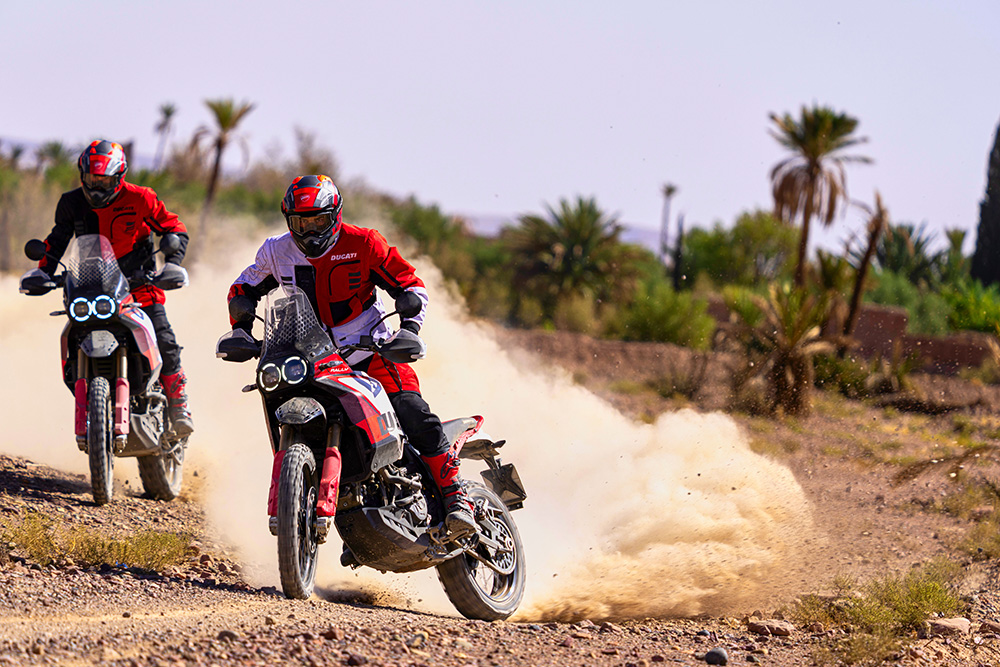
Many people have been working on this model over such a long period. But as Project Manager, what do you think is the key to success?
Some people – like me and the Product Manager, Edoardo Carrai, and a few people from R&D – were dedicated almost exclusively to this DesertX Rally machine. We are a company of 1600 people, many of whom are working on a broader spectrum of bikes, and I cannot count how many people have worked on this model in total. So, while some people may be seen to be driving the project, without a team effort, it simply would not be possible to achieve such a good balance with this machine. And by that, I mean the balance of the engine, electronics, chassis, ergonomics and all the other smaller details. That equilibrium – and ensuring everything comes together with excellent performance and reliability – is what I believe makes a really great product.
Where to for you now?
Well, we are working on many completely new projects right now so it’s a very intense moment for the company, but also a sign of very good health for Ducati.

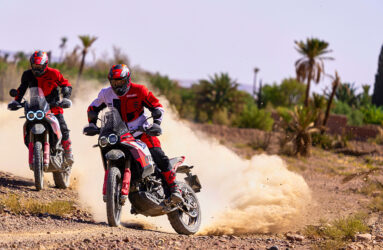
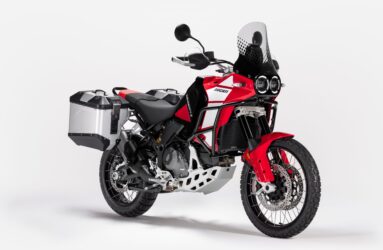
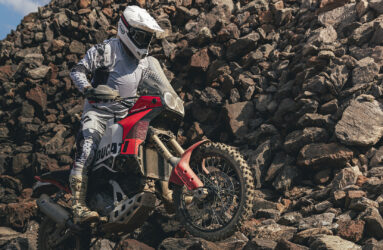
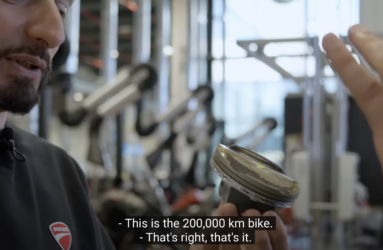
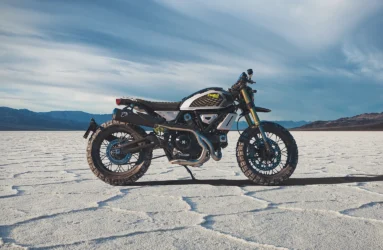
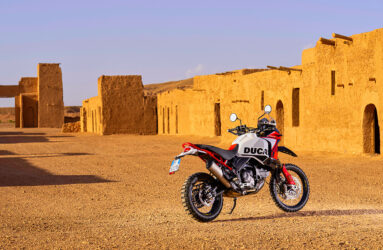
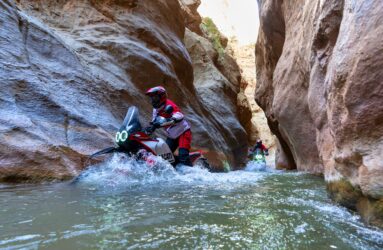
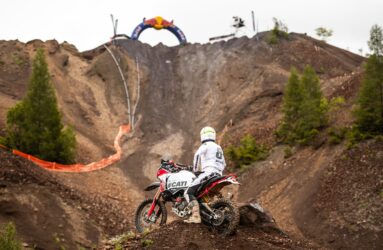
Be the first to comment...